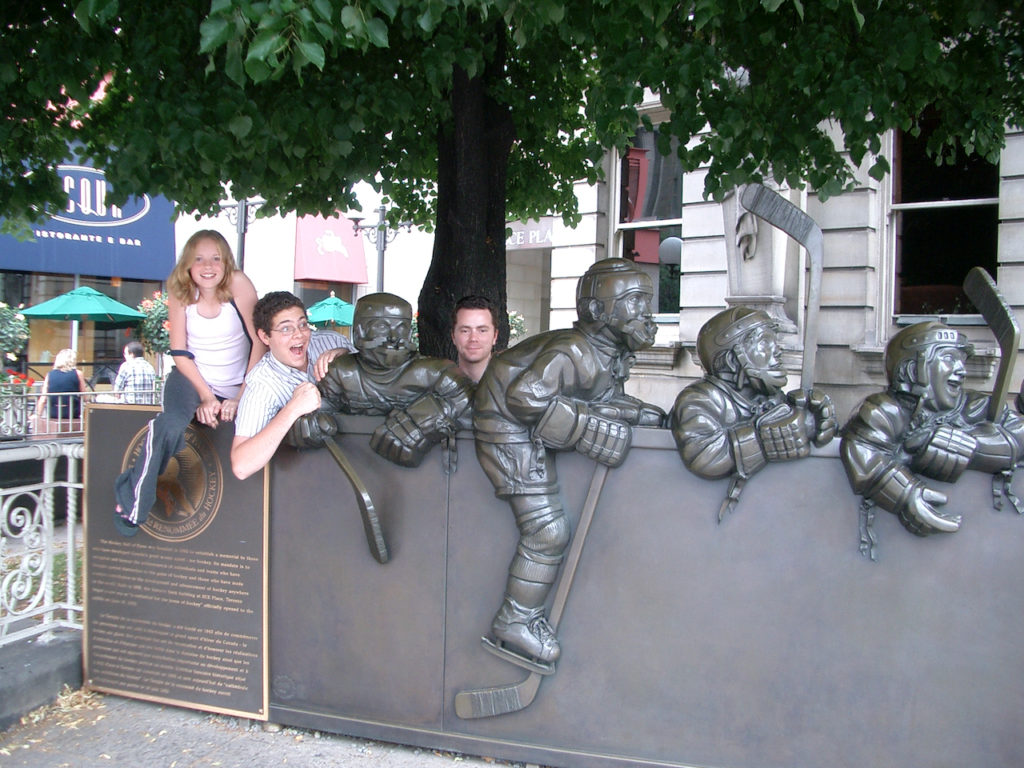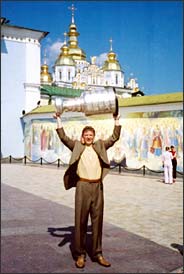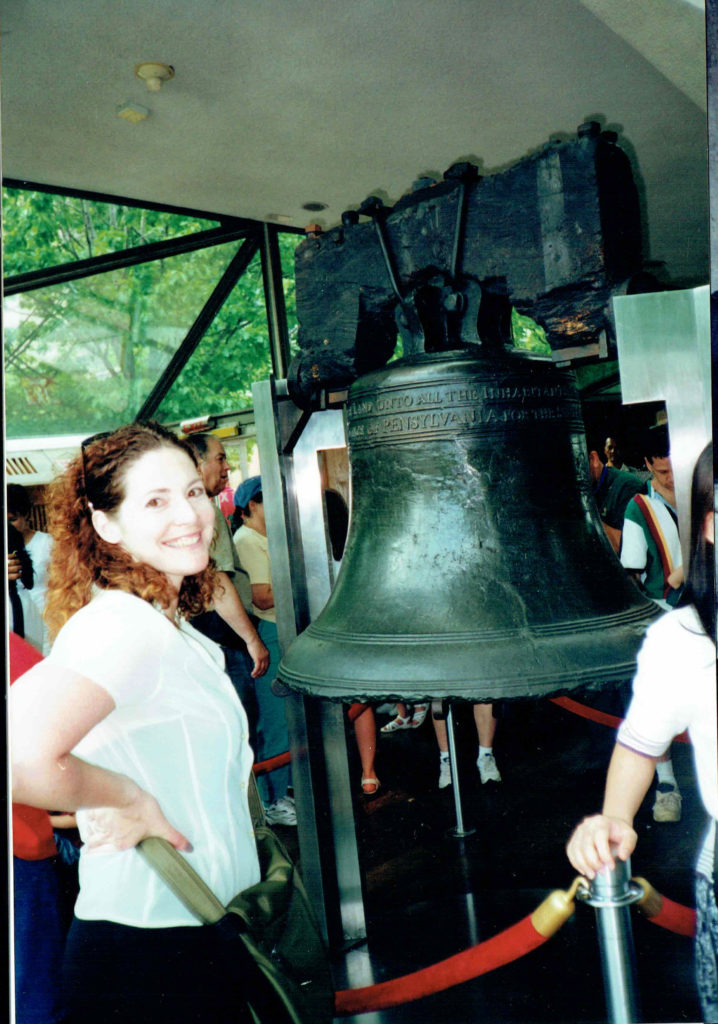Is the Liberty Bell a replica?
No.
That’s the short answer.
So what’s the long answer?
It depends on what you mean when you ask the question.
In his thoroughly entertaining and pragmatically titled 2011 book, The Liberty Bell, Gary B. Nash characterizes the national treasure as a replica of its original self. And that’s true. The bell was purchased in 1751 from the Whitechapel Bell Foundry in London for use in the provincial Pennsylvania State House. It cracked not long after it was hung in the bell tower.
Then the enterprising duo of John Pass and John Stow (the Cornbread and Cool Earl of the 1750s) recast the bell and cast their names into history. What they failed to do was make a good bell. Take two of what was then called the State House Bell was less a replica than a pale imitation. Capable foundry workers but inexperienced in the ancient art of bell making, Pass and Stow added about 150 pounds of copper, producing a less structurally sound bell with an unpleasant tone.
With its functional value diminished, the bell gradually gained symbolic value, ringing out on special occasions. As our young nation flexed its freedom and citizens worked to forge a more perfect union, the bell’s inscription grew more salient.
“Proclaim Liberty Throughout All the Land Unto All the Inhabitants thereof.”
— Leviticus 25:10
Abolitionists adopted the symbol of the bell, and the message of its Biblical quote for their campaign, giving the Liberty Bell its name and securing its place as an American icon.
Then it cracked for good.
Nevertheless, like a scrappy underdog, the bell without a voice became the most vociferous proponent of the American idea. It toured the country, won the Great War and became a global ambassador of American-style self-determination.
Today, around 200 Liberty Bell replicas exist, from the 1915 Justice Bell that helped win women’s suffrage, to the 1950 U.S. Treasury bells that toured every state and most territories selling Savings Bonds. Replicas ring out in Jerusalem, Tokyo and Prague. Annually, over one million visitors line up to spend a moment and snap a photo with the very real Liberty Bell in Philadelphia.
And did you know the Liberty Bell is a replica
Silently housed in its original walls
And while its dreams played music in the night, quietly
It was told to believe— Mitski | The Last Words of a Falling Star | 2014
So is the Liberty Bell a fake?
No.
When most people ask, “Is the Liberty Bell a replica?” I think they really want to know if the Liberty Bell is a fake.
It’s not much of a stretch to imagine the National Park Service and the City of Philadelphia (and Nick Cage, of course) quietly stashing the Liberty Bell in an armageddon-proof vault and replacing it with an utterly convincing but entirely fake replica.
The care and feeding of national treasures
Symbols have always been targets. In 2013, an Arizona man was arrested after telling Liberty Bell guards he had explosives in his backpack. Fortunately, he did not. In 1965, three Americans and a Canadian were arrested with 30 sticks of dynamite and plans to blow up the Liberty Bell, Statue of Liberty and Washington Monument.
In a post 9-11 world, it would seem reasonable — almost prudent — to preserve the Liberty Bell for future generations by protecting it from this one. Visit Lascaux in France, and you’ll be looking at a replica. The real cave was closed in 1963 to prevent its ancient paintings from being loved to death. Natural history museums will often display replica dinosaur bones, the originals safely stored away elsewhere in the building. Even art museums sometimes display replicas visitors might mistake for the genuine article.
In 2004, my family visited Toronto and, naturally, the Hockey Hall of Fame. There, we stood in awe of the Stanley Cup — the most storied trophy in all of sports. The next morning I read a newspaper article about Rusty Fedotenko of the Stanley Cup Champion Tampa Bay Lightning, having his day with the Cup. In his hometown. In Ukraine.

Turns out, there are three things you could call the Stanley Cup.
The original original silver cup, commissioned by Lord Stanley himself, was first presented to the Montreal Hockey Club in 1893. That cup was handed off to the new champion team every year – except 1917 when the influenza pandemic prevented the completion of the final series – until it was secretly replaced.
Fearing the Stanley Cup had become too thin and brittle, the NHL stealthily commissioned a replica and presented it to the unwitting 1964 Toronto Maple Leafs, who had hoisted the real thing just the previous year.
Over the next few years, the secret of the Stanley Cup became less secret within the hockey community. The new Presentation Cup, as it would come to be known, proved a worthy stand-in while the original stayed safe and sound in Toronto.
A nearly identical replica of the replica is the confusingly named Permanent Cup. Produced in 1993, this cup never hears the roar of the crowd. It never serves as a beer cooler or cradles newborn babies, or “accidentally” ends up in the pool. Instead, it simply holds the Presentation Cup’s space in the Hall of Fame while it’s out seeing the world with its white-gloved handlers.

If, like the Stanley Cup, the Liberty Bell was quietly replaced by a faithful stand-in, does it really matter? If the fake Liberty Bell you saw as a kid is the same one you take your kids to, isn’t that really real?
To ask which Stanley Cup is the real Stanley Cup is to question the nature of reality itself. When does a symbol of a symbol become the symbol? Can a replica be more real than the real thing? Tell Patrick Roy he didn’t win the real Stanley Cup four times, and you’re likely to leave the conversation looking more like a hockey player than when you started it.
So the Liberty Bell is real, right?
Sure.
As far as I know. But what do I know? It’s as real as Santa Claus and the Stanley Cup and the economy – which is to say, it’s real as long as we believe it is. It’s the perfect symbol of an imperfect union. It’s the broken bell heard around the world. It’s a worse version of itself that became something better than it ever was. That sounds pretty real to me.



mitski mentioned